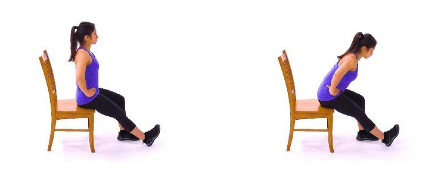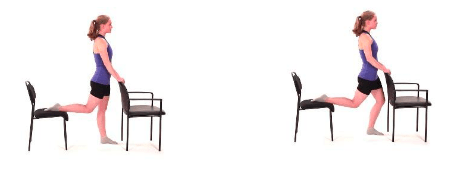Recent studies indicate that more than 80% of Americans will experience an episode of low back pain at some point in their lives. Repercussions of this “condition” create medical costs estimated at greater than $100 billion annually, with two-thirds of costs coming from decreased wages and productivity in the workplace. The most common link to lower back pain is postural stress which is brought on by sleeping in the wrong position, prolonged bending, repetitive spinal flexion, heavy lifting or even sitting, standing or lying with the back in a rounded posture. A study by Cornell University Department of Ergonomics found that up to 90% more pressure is placed on your back when in a seated versus standing posture. Whether working at a desk job or staring down at your phone all day, it’s safe to assume that you are habitually sitting in ways that create abnormal muscle tension and imbalances throughout your neck and back.
On a positive note, low back pain is an issue that in many cases can be prevented with a few easy lifestyle changes and postural adjustments. These adaptations include: healthy eating/maintaining a healthy body weight (i.e.- less weight in the abdominal region= less abnormal stressors on the spine), spinal exercises to maintain strength and joint stability throughout your lumbar region and proper flexibility to maintain spinal-muscle balance. Prolonged sitting (greater than one hour) places additional stress on the low back, so it’s important to try to make a point to stand up for a minimum of 1 minute every hour. Setting a phone timer or reminder while at work can be an efficient way to incorporate this into your routine. When seated, make sure to engage your core musculature or “pull your navel in toward your spine” to provide support and protection for your lumbar spine. Use proper techniques for lifting, i.e. using leg muscles > back, keeping the object close to your center and using a partner-carry when available. Avoid frequent and repetitive bending and twisting and if this is an unavoidable requirement in your job, look into wearing a lumbar support binder to remind you of proper muscle engagement.
It is also vital to properly strengthen the muscles that can become elongated and weak in order to help combat low back pain. Proper strength and recruitment of the muscles of the gluteal region and transverse abdominis can greatly improve lumbar positioning and postural endurance and in turn- relieve back pain. Listed below are 2 simple but efficient exercises to improve strength in these areas:
Glute Bridge

Begin lying on your back with your arms resting at your sides palms facing down. Bend legs at the knees and press your feet flat into the ground. Engage your abdominals by pulling your navel toward your spine and slowly engage your glutes to lift your hips off the floor, pressing your pelvis toward the ceiling. Your back and hips should come into a straight line at the top of the exercise with your arms flat on the floor. Hold for at least 3 seconds at the top of the bridge. Perform 3 sets of 10 repetitions.
Seated Transverse Abdominis Brace
Begin sitting in an upright position with your hands on your lower abdominals. Slowly draw your navel in toward your spine, bracing your deep abdominal muscles. Hold for 10 seconds, then relax and repeat. Make sure to sit as tall as you can and to breathe throughout the exercise. Avoid bending your trunk forward and holding your breath. Perform 2 sets of 10 repetitions, holding each repetition for 10 seconds.
Common muscles that become shortened and tight during prolonged sitting are the hamstrings and hip flexors. Tightness in these muscles can cause excessive pulling and compression of the lumbar spine which contributes exponentially to low back pain during standing. Therefore, these muscles are commonly the focus of stretching to aide in reduction of low back pain and improve standing posture. Listed below are 2 beneficial exercises to improve flexibility in these areas:
Seated Hamstring Stretch

Begin sitting upright with one leg straight forward and your heel resting on the ground. Bring your trunk forward hinging at your hips, engage the front of your thigh/quad and pull your toes up toward your nose until you feel a stretch in the back of your leg. Hold this position for at least 30 seconds, making sure to keep your knee straight during the stretch without allowing your back to arch or slump. Perform 2 sets of 30-60 second holds on each leg.
Hip Flexor Stretch

Begin in an upright standing position holding onto a stable surface, with one foot resting on a chair behind you. Bend your standing leg until you feel a stretch in the front of your opposite hip. Hold this position 30-60 seconds. Make sure to keep your back straight and your hips level and facing forward during the exercise. Perform 2 sets of 30-60 second holds on each leg.
Decreasing low back pain and maintaining proper muscular balance when working a job that requires a lot of sitting can be a tenuous process and will take effort and change in ones routine. Setting an alarm to remind you to stand every hour and performing these exercises once daily will quickly become a part of your normal work flow and takes little effort in the grand scheme of maintaining a healthy back.
**Images courtesy of medbridgeeducation.com.

